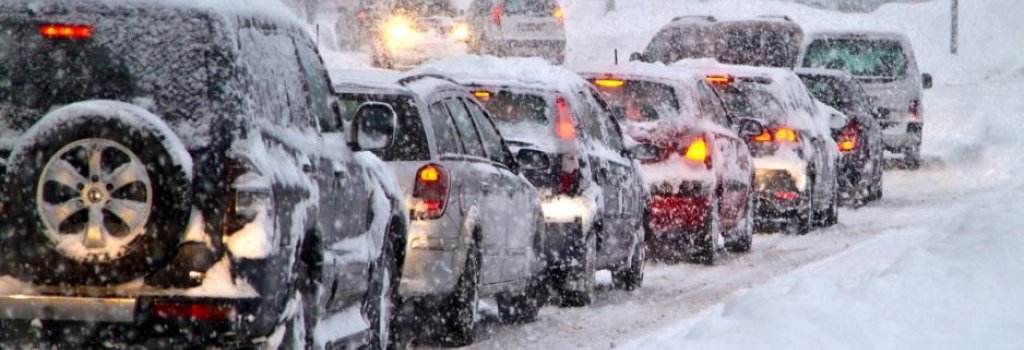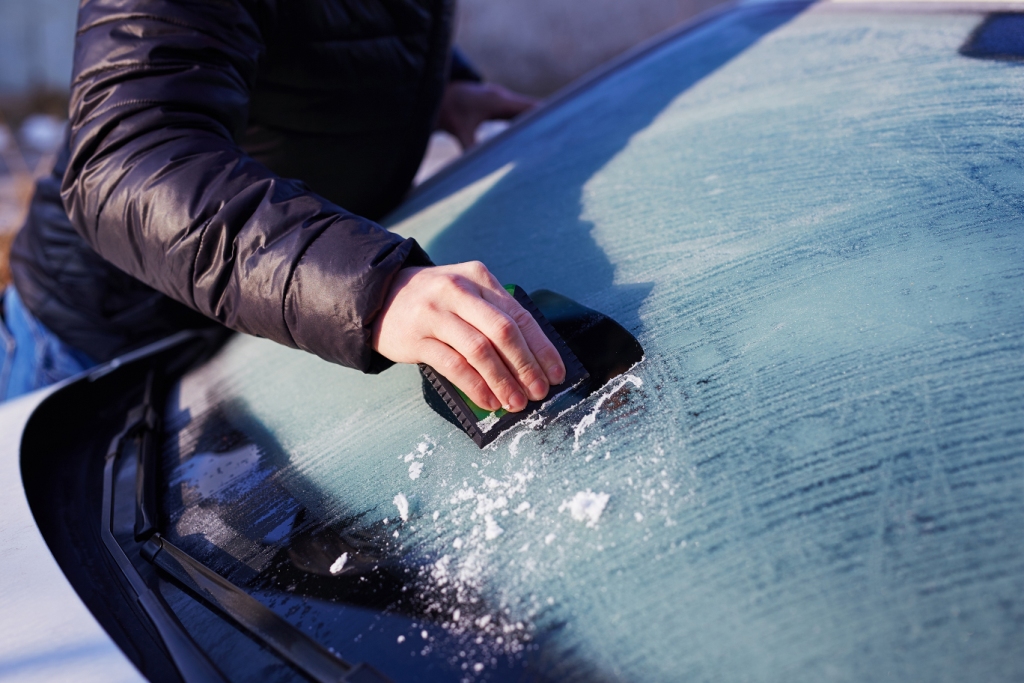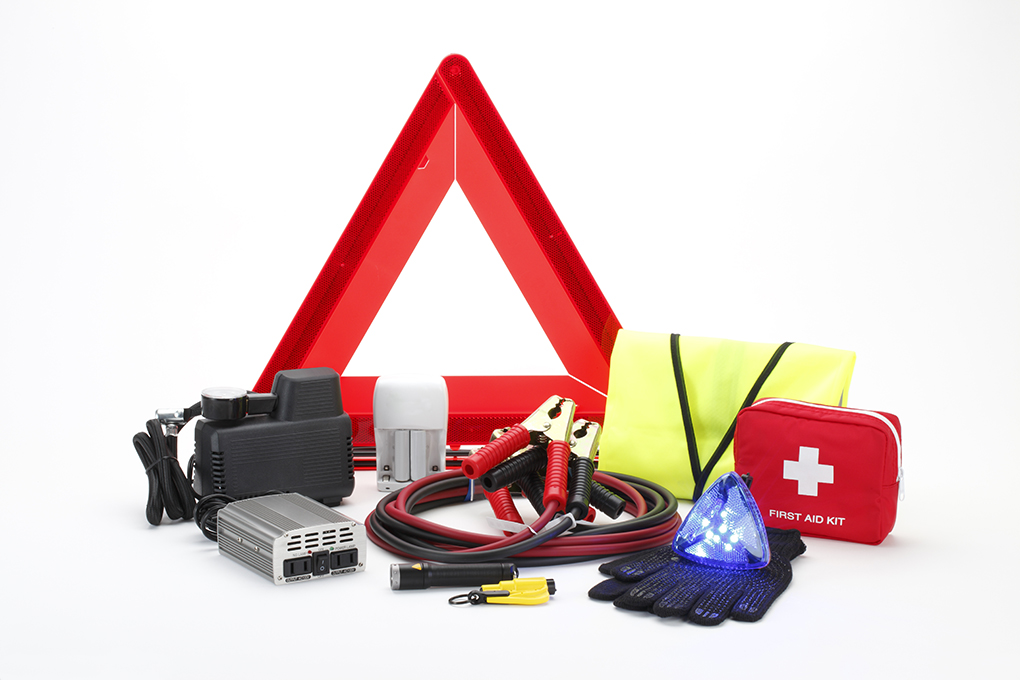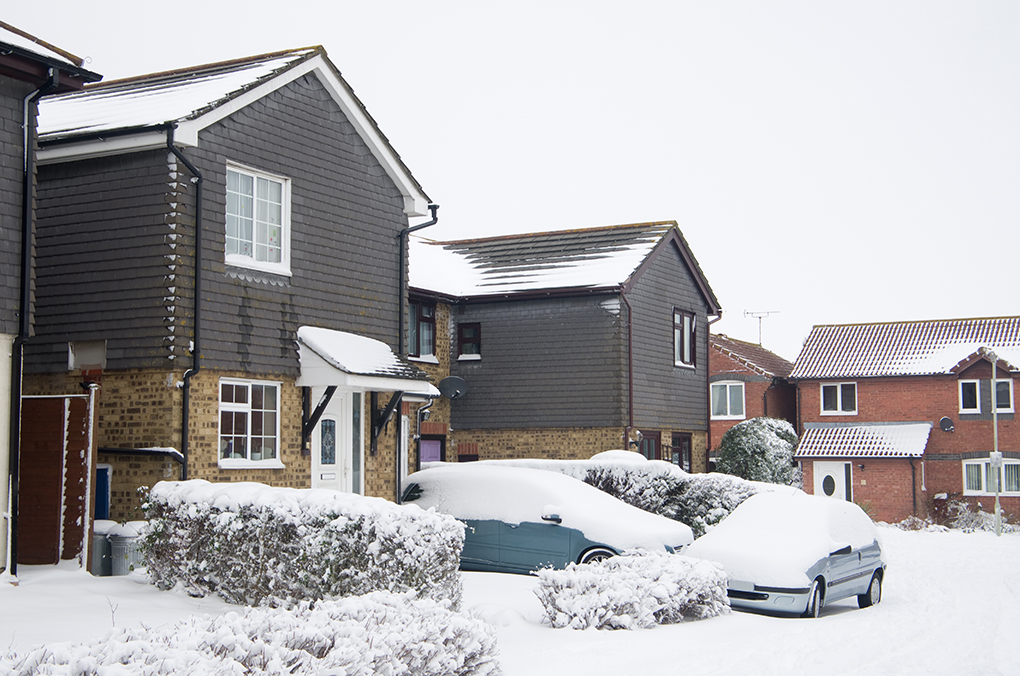Staying safe in the snow when driving

Plan your route in advance
Avoid driving in snow and ice unless your journey is absolutely necessary. If you do have to drive, the roads could be more congested than usual and you’ll have to drive slower, so you may want to consider setting off earlier. You might find it useful to check your route, and stay updated on the weather using the Met Office. Regularly check tyres to ensure they’re in good condition and have a tread depth of at least 3mm (as recommended by many vehicle manufacturers). You may want to check if there is antifreeze in your radiator and windscreen washer bottle. Plus you might want to keep an ice scraper and de-icer in your vehicle during winter.

De-ice your windscreen
When it comes to removing ice from your car windows, you should use de-icer and a scraper. Using other items such as a credit card or CD case could leave a nasty scratch on your windscreen. Never use hot water to melt the ice, as it could refreeze, or worse cause the windscreen to crack.
Don’t drive off with a snowy roof
Before you pull away, make sure your car roof isn’t covered in snow. If you have to break suddenly you might find a mound of snow slipping forward onto your windscreen, which can be dangerous. The same goes for clearing snow off all your windows, including the ones at the side of your car.
Pack an emergency bag
Emergency bags are made up of useful items such as a torch, blanket, water, food, a warning triangle, and a high-visibility vest. Any essential medication should also be included. Having one of these bags in your car could make life a lot easier if you were to break down in the snow.

Using your gears to help get through snow
To avoid wheel-spin use the highest gear possible, but try not to let your speed increase too much. If you do get stuck in the snow, put the vehicle into as high a gear as possible, but slowly manoeuvre the vehicle gently moving forwards and backwards to get the car out.
On icy roads leave ten times the gap between other cars
Leaving a safe distance between other cars is really important when driving in icy conditions because the stopping distances increase so much. Braking harshly is also a major no, as this could send your car into a dangerous skid.*
Keeping calm when driving on icy roads
If you encounter difficulties on icy roads, the main thing is to stay calm, and brake gently, that way you prevent the wheels locking. Get into a lower gear than you were in and let the speed of the vehicle decrease gradually. If you need to drive around a corner, steer very gently to avoid skidding.

Changing from fog to dipped headlights
Dipped headlights cause as little glare as possible, but sometimes we need to use fog lights, or high beams in low visibility conditions (less than 100m - Highway Code rule 226). If you see another car approaching, switch back to dipped lights as soon as possible, as you could dazzle the driver.
If you begin to skid, don’t panic
This might be easier said than done, but the key thing to remember is to never brake harshly–just gently ease off the accelerator, and carefully steer into the direction of the skid until you get the car back under control.
*www.rac.co.uk/drive/advice/learning-to-drive/stopping-distances/
You might also be interested in
If you HAVE to drive on a snow day
Our video shows ways to stay safe on the icy roads
Keeping your home warm and safe when it snows
Top tips to protect your home from the elements


